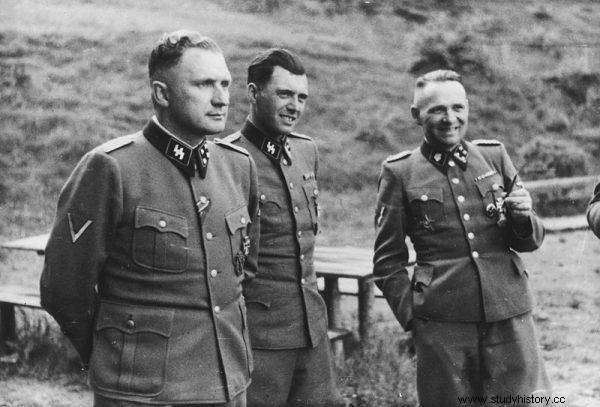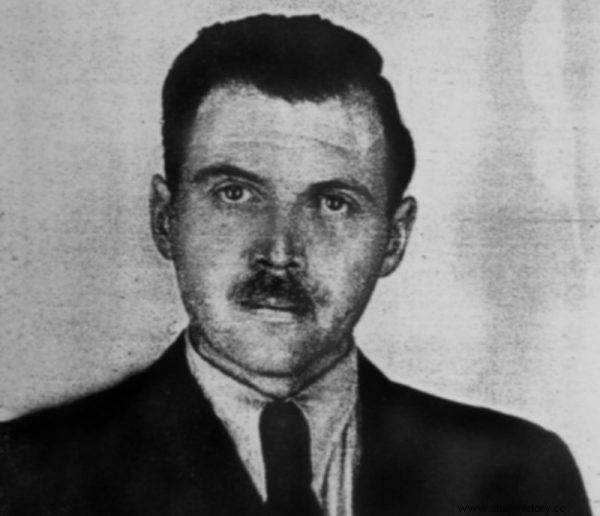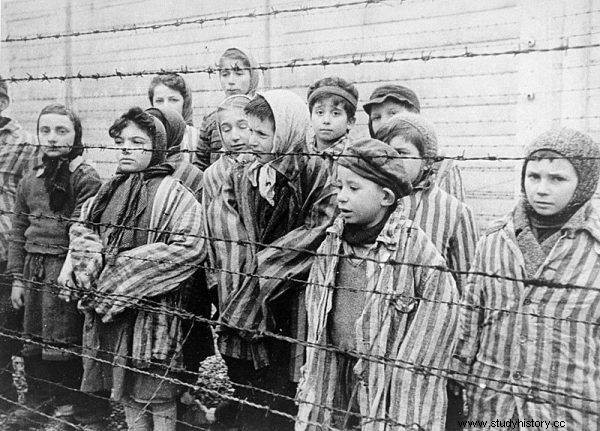In a dozen or so days he would be sixty-eight years old. Meanwhile, his body lay motionless on a Brazilian beach when the clock struck five in the afternoon. The crowd of onlookers slowly began to disperse as the dramatic scene ended. Only a few dozen minutes ago Josef Mengele was swimming in the waters of the Atlantic. But now he is no longer among the living ...
The calendar shows February 7, 1979. On that day, Josef Mengele, at the urging of his friends, decides to go to the local beach to get some fresh air and enjoy the view of nature. And the latter has always aroused admiration among tourists who reside here, who in large numbers undertake trips to the Amazon River to be able to admire its beauty. Anyway, all of Brazil has one of the richest flora and fauna in the world.
Sick with longing
Meanwhile, Mengele's health deteriorates. He is faced with an enlarged prostate, he has back pain, hypertension, rheumatism, and to make matters worse, he has been depressed for at least a few months. It is not hard to guess that the "Angel of Death", as he used to be called, once a man full of energy, now has a problem to enjoy life.
And no wonder. It is not easy to live when you have to be vigilant at every step so as not to get caught in the justice system. In addition, there is still very limited contact with the family. In short, the perfect recipe for depression.

Josef Mengele (in the center) longed for his homeland after the war.
Who knows, maybe today's trip to the beach will improve the mood of this sixty-seven-year-old man. Especially since the thermometers indicate a solid 29 degrees Celsius. As his friend recalled, that day Mengele returned to Germany with his thoughts:
I'm sure he wanted to come back to Germany. On the last day, he said it clearly. I don't know if he was aware of the imminent death; but he was sitting alone on a large boulder and watched east. He said:" My country is over there. […] I would like to spend last days in my hometown of Günzburg somewhere on top of a mountain, on a little pony. I want to write down the history of my town. "
A few moments later, when Mengele starts to get scorching heat, he decides to take a bath. He leaves his clothes on the edge and goes into the water. The ocean is very calm, the water surface is actually completely smooth. Anyway, nothing indicates any further events.
Last breath
Mengele, devoted a moment ago to sentimental memories and thoughts about Germany, unexpectedly feels a surge of energy. In addition, contact with cool water brings him additional relief. He finally feels alive again. And he wants to continue living! Oh yes! Carried in a state of euphoria, he moves away a few meters from the shore. Only then does he begin to understand that something is wrong with his body.
It is likely that at this point he suffered a stroke, caused by an unexpected bleeding. Mengele knows it's over. It is too far from the shore to return to land on its own. In the distance, he only hears someone shouting for him to come back quickly, because where he is, there are strong currents. Unfortunately for him, it is already too late.

The text is an excerpt from Christopher Mack's latest book, "The Confession of Dr. Mengele", published by Bellona Publishing House.
The body of the sixty-seven-year-old refuses to obey, his mind loses control over the surroundings. The fight for life is actually over. This is perfectly illustrated by Mengele's contorted face, expressing pain. Andreas Bossert, one of the people who accompanies him that day, approaches the old man:
I had to hold him back with one hand and make a swim with the other. I struggled to try to keep his head afloat, but the lack of ground under my feet meant we weren't getting closer off to shore. After all, I was so exhausted that I could no longer resist the element. But then I had an idea to use the power of the waves:I dove, burying my feet in the sand and holding his body above his head - he was still alive then.
The chances of saving Mengele are close to zero. Now only the answer to the question is whether the body will be able to get out of the water or will a group of local divers have to do it in a few hours? Bossert, however, does not give up. He fights the resistance of the water and the inert body of an old man that no longer shows signs of life. To his delight, he manages to swim to the shore, dragging the corpse with him. Several rescuers run up to them quickly and help him pull Mengele ashore.
Find out more:Why did the Nazis flee to Argentina after the war?
A crowd of onlookers
Moments later, a doctor who is nearby starts to perform artificial respiration, alternating with heart massage. For a moment a spark of hope flashes, because a trace of life has appeared on Mengele's face, but not for long, it takes literally a fraction of a second. Still, the medic doesn't give up. The fight for life continues. He is still trying to move his heart by blowing more air into the old man's lungs.
Meanwhile, there is a crowd of onlookers close to Mengele, eager to observe the whole incident. The disappointed doctor shook his head, signaling that this time the resuscitation attempt had failed to which the audience reacted quickly, with a groan of disappointment. Evidently, this was not the ending they expected. As you can see, life writes various scenarios, not always having a happy end ...
At this point, Mengele's friends froze. They did not want to admit that he was dead. Yes, he has had health problems lately, but why would that mean immediately that death would come so quickly ?!

Josef Mengele in 1956.
At six o'clock on the beach there were no traces of a dramatic incident. The crowd of onlookers had long since dispersed, only Mengele's body remained, which had been lying on the beach for several hours, waiting for the policeman to arrive. Meanwhile, the corpse was "wandering", being moved by Mengele's friends, because the hour by hour tide was consuming another part of the beach.
The tiny waves soothed body and soul. The calm surface of the water accompanied Mengele until the arrival of the uniformed man. The latter later stated that when he got there, he found a girl holding a lit candle who kept saying, "Uncle is dead, uncle is dead."
"Very nice man"
Many of those who met him recalled that he was a very nice person at first sight. He would bow as a greeting, kiss the woman's hand, and he was also handsome. His hair was brushed back. He presented himself elegant, smelled very nice and gave the impression of someone cordial.
Anyway, he had worn tailored suits in the past. And when he was in a good mood, he whistled the arias of Bach and Wagner. This was exactly what Josef Mengele was, SS-Hauptsturmführer, a doctor from the Auschwitz camp, a man who, with his decisions, sentenced many people to death ...
Second Face
After many hours, we probably reach the place. Huddled in a cattle car, we are extremely exhausted. There seem to be fifty or even a hundred people here. It is so dark that when we get off the car, some people are unable to open their eyes because they are dazzled by daylight. Among us are people who died of exhaustion during the journey.
The SS men screech their voices:Raus! Raus! We leave the car completely weakened. Some people vomit, others pass out, the rest go, dragging their legs heavily on the ground. In all this we are "motivated" by SS men, pounding on the back with rifle butts and those who want to discuss slap in the face.
An elegant man is standing on the ramp. He looks like he is thirty years old. Moments earlier, he had spent a good half an hour in front of the mirror. He obviously pays a lot of attention to his appearance. Dark, thick hair is impressive. At the outset, he shouts:"Doctors and pharmacists, come on!".

Children from Auschwitz surviving.
It is he who decides about further life or death. Everyone has to approach him. And he will pronounce his sentence. He does not use a stick like other doctors. A hand or a signifier look is enough for him. He points his thumb to the right or left side. Yes, that was Josef Mengele. And this is the time, one of nearly eighty, that he was the one who accepted the transport of new prisoners.
As they will find out later, it was not uncommon that the man walked around frustrated. When he was walking around the camp, it was necessary to hide as far as possible, beyond the scope of his sight, just in case. Those who did not manage to do so often died at his hands. Mengele, wearing white gloves, pulled a pistol from his belt and killed the prisoner without any emotion. Later, he spat on the ground, commenting on the whole incident in his typical vocabulary, a bundle of insults like, "What a goddamn idiot!".
See also:They did everything to avoid responsibility. The truth about the post-war fate of the leading Nazis
No trace of man
There are definitely more people going to the left side. Maybe even seventy percent. The rest to the right side. Those who land on the right still have life ahead of them. But what is this life? - one might ask, although nobody knows about it then ...
The rest of the group is walking towards the buildings that say "Disinfection". Seeing this, the prisoners calm down a bit. They go inside, where the guards tell them to take off their clothes and hang them on hooks. Then everyone is directed towards the room that says "Bathhouse." "Probably this is where disinfection takes place," most think. You can see something like showers on the ceiling, from which water will probably start pouring in a moment.
When all the prisoners are in the room, the door to the "bathhouse" slams. After waiting for a while, steam begins to come out of the "showers". The inmates think that hot water is likely to start coming out of them in a moment. This, unfortunately, is only an illusion. Half an hour later it is all over. There are as many as a thousand, and sometimes more bodies lying on the floor in the pseudo-tree.
The fans run constantly. When the SS men are sure that the "bathhouse" has been aired, they let people inside and load the bodies into the elevator. This one takes them to special furnaces. But first, the victims' teeth must be examined. If they have gold, they must be removed. Only after this treatment can the bodies be put into the furnace.
A maximum of three corpses can enter one furnace. Twenty minutes later there was only ash left of the bodies. No trace of a man. Things were different when there was a small group of prisoners to be murdered, let's say thirty people. Then they were taken aside and killed with a shot to the head. Nobody played any "disinfection".
Source:
The text is an excerpt from Christopher Mack's latest book, "The Confession of Dr. Mengele", published by Bellona Publishing House.
